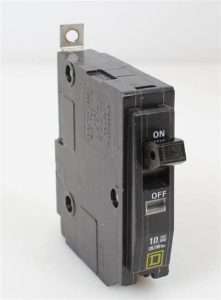The Importance of Junction Boxes in
Electrical Outlets: Signs, Risks, and Solutions
Have you ever been left puzzled by a missing junction box from electrical outlets in your home? This small but essential component plays a vital role in ensuring the safety of your electrical system. It’s a container for electrical connections, designed to prevent fires and electrical shock. If it’s missing, it could pose serious risks.
The junction box is the unsung hero of your home’s electrical system. Without it, wiring becomes a chaotic mess, and the risk of electrical accidents skyrockets. It’s not a feature you should ignore.
Let’s delve deeper into the issue of missing junction boxes and explore why they are indispensable to your home’s electrical safety.
So, if you’re scratching your head over a missing junction box from your electrical outlets, you’ve come to the right place. Keep reading to learn more about this vital piece of your electrical puzzle.
What is a Junction Box?
A junction box is an essential component in electrical systems that helps to ensure safety and facilitate the distribution of electricity. It serves as a protective enclosure for electrical connections, securing them from damage and preventing potential hazards such as electrical fires or shocks. In this section, we will delve into the purpose and importance of junction boxes, as well as explore their various types and functions.
Importance of Junction Boxes
Junction boxes are needed in electrical installations to provide secure housing for electrical connections. They are designed to contain and protect wires, terminals, and other electrical components, shielding them from external factors like moisture, dust, or accidental contact. By enclosing these connections, junction boxes minimize the risk of short circuits, electrical malfunctions, and potential harm to individuals or property.
Without junction boxes, electrical connections would be left exposed, vulnerable to damage or accidental contact. This could lead to electrical arcing, overheating, or even electrical fires. Moreover, junction boxes help organize and manage wiring connections, making troubleshooting and maintenance easier, especially in complex electrical systems.
Types of Junction Boxes
Junction boxes come in various shapes, sizes, and materials to accommodate different electrical needs and environments. Here are some common types of junction boxes:
- Metal Junction Boxes: These are typically made of steel or aluminum and provide excellent durability and protection. They are commonly used in commercial and industrial settings where robustness is required.
- Plastic Junction Boxes: Constructed from PVC or polycarbonate, plastic junction boxes offer lightweight and cost-effective options for residential or light commercial applications. They are also resistant to corrosion, making them suitable for outdoor installations.
- Weatherproof Junction Boxes: Designed to withstand harsh weather conditions, these junction boxes have additional features such as rubber gaskets or sealed lids, ensuring a watertight enclosure. They are commonly used in outdoor electrical installations.
- Underground Junction Boxes: As the name suggests, these junction boxes are specifically designed for buried or underground applications. They are constructed with materials that can withstand the pressure and moisture encountered in such environments.
Functions of Junction Boxes
Junction boxes serve several important functions in electrical systems:
- Protection: The primary purpose of a junction box is to protect electrical connections from external elements such as moisture, dust, or accidental contact. This helps prevent short circuits, electrical shocks, and potential hazards.
- Containment: Junction boxes provide a secure housing for wires, terminals, and other electrical components, keeping them organized and preventing tangles or disarray. This makes troubleshooting, repairs, or additions to the electrical system more manageable.
- Expansion: Junction boxes allow for the expansion of electrical circuits by providing additional space for new connections. This flexibility is particularly useful when renovating or adding new electrical devices or appliances to an existing system.
- Code Compliance: Electrical codes and regulations often require the use of junction boxes in specific situations. Compliance with these codes ensures the safety and reliability of electrical installations, making junction boxes an integral part of meeting these requirements.
Importance of Junction Boxes in Electrical Outlets
Junction boxes may seem like a small and insignificant component of electrical outlets, but their importance should never be underestimated. These boxes play ensure safety and protection while preventing electrical fires. Let’s dive deeper into why junction boxes are indispensable in any electrical installation.
Ensures Safety and Protection
Junction boxes act as a protective barrier between the electrical wiring and the surrounding environment. They are designed to contain any potential sparks or heat generated by the electrical currents flowing through the wires. Without junction boxes, these sparks could easily ignite flammable materials nearby, leading to catastrophic fires.
Additionally, junction boxes prevent accidental contact with live wires. They provide a secure enclosure where the connections between wires can be made, reducing the risk of electrical shocks. This is especially important in areas where the wiring might be exposed or accessible to children or pets.
Prevents Electrical Fires
One of the primary functions of a junction box is to prevent electrical fires. The enclosed space within the box helps contain any sparks or heat produced by the electrical connections. This prevents them from coming into contact with any nearby combustible materials, which could otherwise ignite and cause a fire.
Junction boxes also help distribute the electrical load evenly across multiple wires, preventing overheating. When wires are connected without a junction box, they can become overloaded, leading to excessive heat buildup and potential fire hazards. The box acts as a safeguard, ensuring that the electrical system operates within safe limits.
Signs of a Missing Junction Box
A missing junction box from electrical outlets can pose a serious safety risk in your home. Without a junction box, the electrical connections are left exposed, increasing the chances of electrical shocks, short circuits, and even fires. In this section, we will explore some common signs that indicate a missing junction box.
Visible Wires and Connections
One of the most obvious signs of a missing junction box is the presence of visible wires and connections. Instead of being neatly tucked away inside a secure box, the wires will be exposed and vulnerable. You may notice wires hanging out of the wall or dangling from the electrical outlet. This not only looks unsightly but also puts you at risk of coming into contact with live wires.
Loose or Exposed Wires
Another telltale sign of a missing junction box is the presence of loose or exposed wires. When a junction box is not in place, the wires can become loose and disconnected. This can happen over time due to normal wear and tear or improper installation. Loose wires can lead to electrical malfunctions, such as flickering lights or intermittent power supply. Additionally, exposed wires increase the risk of electrocution and electrical fires.
Unstable Electrical Outlet
If you notice that your electrical outlet feels loose or wobbly, it may be a sign of a missing junction box. A junction box provides stability and support for the outlet, ensuring that it remains securely attached to the wall. Without a junction box, the outlet can become loose, making it more susceptible to damage and posing a safety hazard. If you experience any instability with your electrical outlets, it is important to address the issue promptly to prevent further damage or accidents.
Risks of a Missing Junction Box
In the world of electrical outlets, the humble junction box often goes unnoticed. Yet, its absence can pose significant risks that should not be ignored. In this section, we will explore two major dangers that arise from a missing junction box: an increased risk of electrical shock and potential damage to electrical appliances.
Increased Risk of Electrical Shock
Without a junction box, electrical wiring is left exposed, leaving individuals vulnerable to electrical shock. The junction box serves as a protective housing for the electrical connections, ensuring that wires are safely enclosed and insulated. Its absence can lead to accidental contact with live wires, especially in high-traffic areas.
Picture this: You’re in the kitchen, preparing a delicious meal, and your hand accidentally grazes the exposed wires behind the countertop. Without the protective barrier of a junction box, the shocking consequences become all too real. The risk of electrical shock escalates when the wiring is concealed behind walls or hidden from plain sight, making it difficult to detect the potential danger.
Potential Damage to Electrical Appliances
Not only does a missing junction box endanger individuals, but it also poses a threat to electrical appliances. Without proper protection, the exposed wiring can cause damage to connected devices. The insulation on electrical wires prevents short circuits and electrical fires, but without a junction box, the risk of these hazards increases significantly.
Imagine plugging in your beloved television to an outlet without a junction box. Over time, the exposed wires can lead to electrical surges, damaging the delicate electronic components within your TV. The cost of replacing or repairing your appliances could far outweigh the expense of installing a junction box in the first place.
By now, you may be wondering: How can I avoid these risks? The answer lies in ensuring that your electrical outlets are equipped with sturdy and functional junction boxes. Not only will this safeguard you and your appliances, but it will also provide peace of mind knowing that your electrical system is up to code and operating safely.
Reasons for a Missing Junction Box
Introduction
When it comes to electrical outlets, safety should always be a top priority. However, sometimes homeowners or inexperienced individuals may overlook certain components during installation or repair. One such component that is often missing is the junction box. In this section, we will explore two main reasons behind a missing junction box: improper installation and DIY electrical work.
Improper Installation
Improper installation is a common reason why junction boxes go missing. When electrical outlets are installed without a junction box, it poses a significant risk to both the occupants of the building and the electrical system itself. Let’s delve deeper into why this occurs.
Lack of Knowledge
One primary reason for missing junction boxes during installation is a lack of knowledge or understanding about their importance. Some individuals may not realize that junction boxes serve as protective enclosures for electrical connections. They are designed to prevent electrical sparks and fires by containing any potential sparks or short circuits that may occur.
Cost Cutting Measures
In certain situations, the absence of a junction box may be a result of cost-cutting measures. Homeowners or contractors may choose to skip this essential component to save a few dollars. However, this decision can have serious consequences, as it compromises the safety of the electrical system and increases the risk of electrical hazards.
Negligence or Rushed Work
Another reason for missing junction boxes is negligence or rushed work during installation. In some cases, electricians or DIY enthusiasts may overlook the need for a junction box due to time constraints or a careless approach to the job. This negligence can lead to long-term safety issues and potentially hazardous situations.
DIY Electrical Work
Apart from improper installation, another reason for missing junction boxes is DIY electrical work. While it’s commendable to take on projects and repairs around the house, electrical work should always be approached with caution and expertise. Let’s explore why DIY electrical work can contribute to the absence of junction boxes.
Lack of Training and Experience
One of the main reasons for missing junction boxes in DIY electrical work is the lack of proper training and experience. Many individuals without a background in electrical work may attempt to fix electrical issues on their own, often resulting in incomplete or unsafe repairs. Without the necessary knowledge, these DIYers may overlook the importance of junction boxes or simply not know how to install them correctly.
Overconfidence in Abilities
Sometimes, individuals may overestimate their abilities and attempt electrical work that is beyond their skill level. This can lead to hasty and incomplete repairs, with junction boxes being one of the components that are overlooked. Overconfidence can be dangerous when it comes to electrical work, as it can compromise both personal safety and the integrity of the electrical system.
Lack of Code Compliance
Lastly, DIY electrical work may not always adhere to electrical codes and regulations. Electrical codes exist to ensure the safety and functionality of electrical systems. However, individuals attempting DIY repairs may not be aware of these codes or may choose to ignore them. This disregard for code compliance can result in missing junction boxes and other safety hazards.
Solutions for a Missing Junction Box
A missing junction box from electrical outlets can pose potential risks and safety hazards. It is important to address this issue promptly to ensure the safety of your home and its occupants. In this section, we will explore two effective solutions for dealing with a missing junction box: hiring a licensed electrician and upgrading the electrical system.
Hiring a Licensed Electrician
When facing a missing junction box, it is highly recommended to hire a licensed electrician to handle the situation. A licensed electrician possesses the necessary expertise and knowledge to assess the problem accurately and implement the appropriate solutions. Here are some reasons why hiring a licensed electrician:
- Safety and Compliance: Licensed electricians are trained to adhere to strict safety standards and building codes. They will ensure that the installation of a new junction box is done correctly and in compliance with regulations, reducing the risk of electrical faults and potential accidents.
- Expertise and Experience: Electricians undergo rigorous training and have extensive experience in dealing with electrical systems. They can identify any underlying issues and provide professional advice on how to rectify the missing junction box problem effectively.
- Efficiency and Time-saving: Hiring a licensed electrician saves you time and effort. They have the necessary tools and equipment to complete the job efficiently, minimizing disruptions to your daily routine.
Upgrading the Electrical System
Another viable solution for a missing junction box is to consider upgrading the electrical system in your home. This option not only addresses the immediate problem but also provides long-term benefits. Here are some advantages of upgrading your electrical system:
- Enhanced Safety: Upgrading the electrical system allows for the installation of new junction boxes that are designed to meet modern safety standards. This ensures a safer electrical infrastructure in your home, reducing the risk of electrical fires and shocks.
- Increased Capacity: Older electrical systems may not be equipped to handle the demands of today’s electrical appliances and devices. Upgrading the system allows for increased capacity, ensuring that it can support the growing electrical needs of your household.
- Improved Energy Efficiency: Upgrading to newer electrical components, such as energy-efficient outlets and switches, can help reduce energy consumption and lower your utility bills. This not only benefits the environment but also saves you money in the long run.
Importance of Regular Electrical Inspections
Regular electrical inspections are for maintaining the safety and functionality of your electrical system. By identifying and addressing issues early on, you can prevent potential hazards and ensure the smooth operation of your electrical system. Additionally, regular inspections help ensure compliance with electrical codes, which are in place to protect you and your property from potential dangers.
Identifying and Addressing Issues
During a regular electrical inspection, a trained professional will thoroughly examine your electrical system, including wiring, outlets, switches, and other components. They will look for any signs of wear and tear, damage, or potential hazards. By identifying these issues early on, you can take the necessary steps to address them before they escalate into more significant problems.
Ensuring Compliance with Electrical Codes
Electrical codes are a set of safety standards and regulations that govern the installation and operation of electrical systems. These codes are put in place to ensure the safety of individuals and properties. Regular electrical inspections help ensure that your electrical system is in compliance with these codes.
During an inspection, the electrical professional will assess whether your system meets the required standards. They will check for proper wiring methods, appropriate grounding, and adherence to safety regulations. By ensuring compliance with electrical codes, you can have peace of mind knowing that your electrical system is safe and meets industry standards.
Conclusion
The presence of a junction box is for the safety and functionality of electrical outlets in our homes. The absence of a junction box not only violates electrical codes but also poses serious risks such as electrical shocks, short circuits, and even fires. By ensuring that junction boxes are properly installed, we can protect ourselves, our families, and our properties from potential hazards. Remember, always consult a licensed electrician for any electrical work to guarantee compliance with regulations and to maintain a safe environment. Don’t compromise on safety when it comes to electrical installations.







